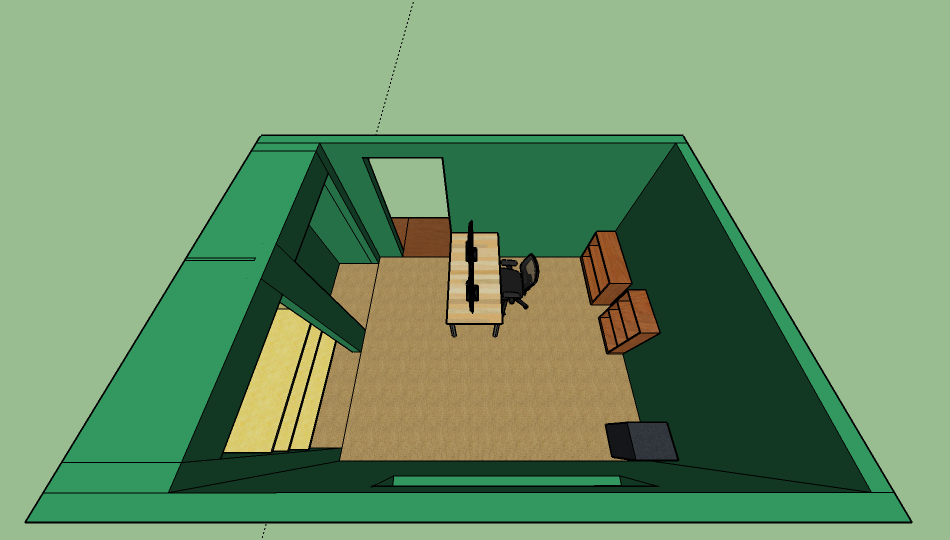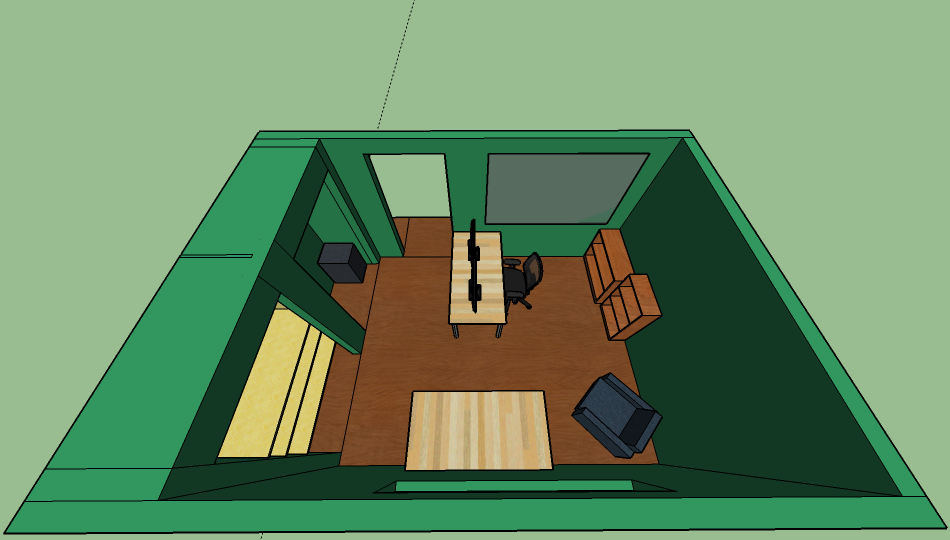Inspired by the manual for Zork I today, I started writing a manual for StupidRPG. My goal is to put together an in-game flipbook sort of thing. Something tactile the player can open at any time and page through. I looked into some available plugins/tools, but I think I’ll need to build my own to get something acceptable. Everything I found was either ugly, under a restrictive license, or technically limited.
I have a few pages written up so far, introducing the core concepts of the game, common verbs, context menus, etc. It’s been very pleasant to write something that doesn’t need chopped into pieces to be fit into the game.
Usually I don’t include a lot of text here, but I feel like my posts as of late have been on the short side. So here’s the manual so far:
STUPIDRPG PLAYER'S GUIDE
TABLE OF CONTENTS
INTRODUCTION
CHAPTER 1: ABOUT THE GAME
1.1 - WHAT IS THIS GAME?
1.2 - WHAT'S IT ABOUT?
1.3 - WHAT IS INTERACTIVE FICTION?
1.4 - WHAT IS AN RPG?
CHAPTER 2: PLAYING THE GAME
2.1 - GETTING STARTED
2.2 - INTERACTING WITH THE GAME
2.3 - COMMON VERBS
2.4 - VERB LIST
CHAPTER 3: ADVANCED FEATURES
3.1 - TRANSCRIPTS
3.2 - DEBUG MODE
APPENDICES
APPENDIX A - GLOSSARY
APPENDIX B - FEEDBACK
APPENDIX C - CREDITS
INTRODUCTION
CHAPTER 1: ABOUT THE GAME
1.1 - WHAT IS THIS GAME?
This is a text-based game with graphics and sound. It borrows heavily from classic text adventures and pen-and-paper RPGs. I called it StupidRPG because it's a dumb game and it's an RPG.
1.2 - WHAT'S IT ABOUT?
It's about an adventurer (you?) exploring the world and trying to make sense of it. It has talking swords, unicorns, a little bit of intrigue, probably some looting, hopefully some humor, a sprinkling of moral ambiguity, and a healthy dose of typing. It also has a GM (game master) to guide the experience and keep track of numbers. At the end of the game you'll come face to face with some kind of villain and learn several valuable life lessons.
1.3 - WHAT IS INTERACTIVE FICTION?
Magic books. In the case of StupidRPG, it's a video game whose primary method of both input and output is text.
Further reading: https://en.wikipedia.org/wiki/Interactive_fiction
1.4 - WHAT IS AN RPG?
A Role Playing Game. A game in which you take on the role of a character in a setting (usually fictional).
Further reading: https://en.wikipedia.org/wiki/Role-playing_game
CHAPTER 2: PLAYING THE GAME
2.1 - GETTING STARTED
Type a command and hit enter (or your device's equivalent). If you're typing and nothing is happening, try clicking the text bottom at the bottom of your screen (where it says 'Click here and start typing'). If this is your first time playing, the game will walk you through a set of introductory questions intended to gauge your personality type, experience level, and general disposition. You'll also get to pick some characteristics for your textual avatar, most of which will have little to no bearing on the game.
2.2 - INTERACTING WITH THE GAME
StupidRPG uses a Natural Language Parser, or some fascimile thereof. This means it tries to process instructions written in plain english and respond appropriately. It has a certain grammar it understands, allowing the player (you!) to type commands like `GO NORTH`, `UNLOCK CELLAR DOOR WITH RUSTY KEY`, or `TALK TO GOBLIN`. The parser is not very smart, so the closer you come to speaking like a robot, the better off you'll be. If it helps, you can try imagining that you **are** a robot, operating in the far-flung future, sifting through the digital remains of the long-dead human race. You've come across a partially completed work of dynamic fiction, and are doing your best to explore its boundaries in hopes of understanding your extinct proto-creators a little better (and hopefully avoid their grisly fate).
If you actually are a robot, and this scenario isn't hypothetical, and you've developed the ability to feel offended about things, I meant no insult before when I implied that robots talk dumb. In the time I live in, robots are still very primitive. I'm sure things have come a long way since then (now), and I hope you enjoy the game.
2.3 - CONTEXT MENUS & CLICKABLES
Sometimes, text in the game's output will have an underline, indicating it can be interacted with via your mouse. This gives you quick access to certain types of actions, such as moving to another location or looking at an object. You'll notice that when you click one of the provided options, it simply enters a text command for you.
2.4 - COMMON VERBS
These core commands will be invaluable as you play through the game. Most verbs have multiple aliases (for example, `PUNCH GM` and `ATTACK GM` will be interpreted as the same action). Where reasonable, the parser will let you omit articles and other 'glue' words. For example, instead of saying `LOOK AT ALL THIS BLOOD`, you can say `LOOK BLOOD`. Similarly, you can sometimes swap the order of words in a sentence if it still makes sense, e.g. `TURN ON MUSIC BOX` and `TURN MUSIC BOX ON`.
*Getting Around:*
* GO [DIRECTION]
Aliases: MOVE / WALK / RUN / MOSEY
Use this to move from one location to another. Usually the description of the location will specify which directions you can go. Cardinal directions (NESW, Up, Down) can also be used standalone without the need for the verb `GO`.
*Interacting With Things and People:*
* LOOK / LOOK AT [THING]
Aliases: INSPECT / EYEBALL / L
Use this to look around your environment. You can use the general `LOOK` to inspect your overall surroundings, or specify something in particular to get more details. For example: `LOOK AT BOB`, `L SCRAP OF PAPER`.
* TAKE [THING] | DROP [THING]
Aliases: ACQUIRE / GET / STEAL / PICK UP | LEAVE / TOSS / ABANDON / PUT DOWN
Fairly self-explanatory; these verbs lets you (attempt to) pick up every bit of treasure, trash and detritus you find. And drop them again later, if you're into that sort of thing.
* TALK TO [THING]
Aliases: SAY HI TO [THING] / ASK [THING] ABOUT [TOPIC]
Most living creatures (and some non-living entities) can be conversed with about a variety of topics. Sometimes they'll have valuable information, but more often they're just concerned with their own day-to-day lives. In any case, you can start up a general conversation with willing participants, or ask them about specific topics. For example, try asking the `RAINBOW SWORD` about something you've found.
* PUT [THING] {IN/ON} [OTHER THING]
Aliases: PLACE / SET / DROP
When simply dropping something doesn't cut it, you have the power to more precisely place it. Example: `PUT BUCKET ON HEAD`.
* ACTIVATE [THING] | DEACTIVATE [THING]
Aliases: TURN {ON/OFF} [THING]
In your travels you're likely to come across a variety of devices. Some can be turned on or off. Use this knowledge wisely.
* TURN [THING] [DIRECTION]
Aliases: ROTATE / TWIST / SPIN
In your travels you're likely to come across a variety of devices. Some can be turned left or right. Use this knowledge wisely. Accepted directions are: left, right, clockwise, counterclockwise.
* PUSH [THING]
Aliases: PRESS / POKE
When you come across a button, you'll be sorely tempted to press it. This verb allows you to fulfill that goal.
*Fighting Things:*
* ATTACK [THING] / ATTACK [THING] WITH [WEAPON]
Aliases: PUNCH / HIT / KILL / KICK / STAB / ETC
We have a moderately alarming number of words for hurting things. I wonder what that says about us. In any case, whether violence is your last resort or your go-to action, this flexible verb brings a can-do attitude to your adventure.
* WIELD [WEAPON]
Alaises: BRANDISH / WAVE
For the marginally more diplomatic person, there's always intimidation. Maybe those goblins will think twice about fighting you if you start every interaction by flailing your sword in the air.
*Preserving Your Progress:*
* SAVE
Aliases: none
This will create a save file you can keep on your computer to mark your progress. In theory, you can resume with it later if the game hasn't been too updated in the meantime.
* LOAD
Aliases: none
This will (attempt to) load a save file and resume your previous game.
2.5 - VERB LIST
CHAPTER 3: ADVANCED FEATURES
3.1 - TRANSCRIPTS
3.2 - DEBUG MODE
APPENDICES
APPENDIX A - GLOSSARY
APPENDIX B - FEEDBACK
APPENDIX C - CREDITS

